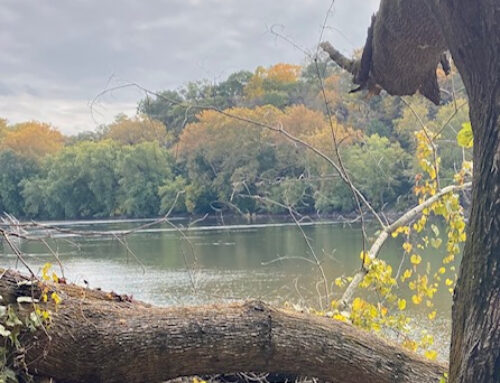
Despite the presence of large cities, Maryland has a thriving 4-H program that spans urban and rural areas alike.
A few years back, a friend from Washington D.C. visited my farm for the first time. Right off the bat, he noticed the bumper sticker on my pickup truck, a green four-leaf clover emblazoned with large, white H’s.
“Forrest,” he said, without the slightest trace of humor, “you never told me you were Irish!”
Suffice to say, he had never heard of 4-H, a youth program every bit as venerable as the Boy or Girl Scouts. But he’s not alone. Even with 6 million current members, 30 million alumni, and a 110 year track record, 4-H continues to fly beneath our cultural radar. Unless you happened to be raised in rural America, chances are you might not have crossed paths with this program yourself. But 4-H remains a vital—if habitually unassuming—thread in our national tapestry, and it’s a program that deserves more positive press than it commonly receives.
Traditionally linked arm-in-arm with agriculture, over the years 4-H has increasingly veered towards mainstream American life. In fact, according to their website, 4-H now teaches topics ranging “from agricultural and animal sciences to rocketry, robotics, environmental protection and computer science – to improve the nation’s ability to compete in key scientific fields and take on the leading challenges of the 21st century.” Rocketry and robotics? Sheesh, that’s a far cry from the ascot I made for my “You Can Sew” project way back in middle school. (I’d like to imagine that if they offered Robotics projects in 1984, that I’d have traded in my ascot for an android. But I digress.)
In my case, I eventually graduated from sewing to sowing… that is, sowing seeds, and raising sows. I was one of those 4-H farm kids who actually ended up becoming a professional farmer. Surprisingly, even though my club was located in rural West Virginia, few of my peers became farmers themselves. Most opted for careers in nearby Washington D.C., and left agriculture behind as they commuted to work each day in the big city.
But history has a way of circling back on itself. While supporters would argue that its agricultural mission never went away, 4-H’s farming identity might be primed for an unexpected, retro-style comeback. The likelihood of this occurred to me while thumbing through the 2013 Farmers Almanac. You know the Farmers Almanac, of course—the one started in 1818 and used each year for weather forecasts to gardening advice to the best time to go fishing. It even comes with an unmistakable, (if rather mysterious) hole punched through the upper left hand corner, providing its readers the option to hook it to their belt loop while transplanting tomatoes.
The Farmers Almanac also provides several pages of new farming statistics straight from the USDA’s most recent census. Perusing the numbers, several interesting stats jumped out at me. For instance, did you know:
The average age of an American farmer is 57, and the number of farmers over the age of 75 grew by 20% over the last 5 years alone.
● The number of new farms between 2002 and 2007 actually increased by nearly 300,000, reversing a multi-generational decline.
● In the past 20 years, women have become 50% more likely to choose a career in agriculture. Currently, 10% of all farmers are women.
● A trend shows that American farmers are more educated than ever, with roughly 50% of farmers now attending at least one year of college.
● Average gross farm income was over $137k, with profits coming in at slightly more than $35K.
As the statistics suggest, while agriculture is still heavily skewed towards an older age bracket, there are more reasons than ever for young people to feel optimistic about the future of agriculture. As these older farmers retire, who will replace them? And who will teach the next generation? A program like 4-H is ideally positioned to contribute to their education, and increase the odds of a successful career in farming. Here are several reasons why.
4-H projects are roadmaps to productivity
‘4-H projects’ are booklet-based educational programs which engage 4-Hers in a step-by-step explanation about how to do… well… just about anything. For example, aside from the aforementioned sewing course, I took: Canning and Freezing, Gardening, Tractors, Forestry, Pet Care, Poultry, Small Engine Repair and Beef Cattle. Each year, the participant is required to complete a series of written objectives, as well as hands-on activities relating to the topic. The project culminates in an exhibit, which in my case was placed on display at the county fair each season. In short, projects aren’t simply how-to guides; productivity is required as a component to the coursework. For a young farmer broaching a topic as knowledge-intensive as agriculture, this kind of curriculum is truly indispensable.
Emphasis on intellectual curiosity
Aside from completing their coursework, all participants give an annual presentation to their fellow members about what they’ve learned from their projects. Not only does this foster public speaking and communication skills, but it places the student in a peer-based environment where members support one another. Field trips accentuate this trajectory, providing club members with tangible, real world perspectives. My favorite part of visiting a dairy, for example, was the ice cream sandwiches that were passed out at the end. If given the opportunity, what kid wouldn’t dream of becoming an ice cream sandwich farmer?
The program teaches self-confidence, and provides a peer-based safety net
In a career with as many uncertainties and challenges as agriculture, self-confidence can often be a farmer’s greatest ally. It’s by nurturing intangible qualities such as confidence and creativity where 4-H might provide its greatest service to our youth. The structure of the club itself encourages collaboration within the community, with knowledge (and a little old-fashioned fun) as the reward. Annual attendance at summer camps further enhances this inner-growth message.
Imagine a world filled with optimistic, knowledge-driven farmers, who celebrate each other’s successes, and lend a hand when their neighbor needs help. Sound too good to be true? When was the last time you attended a 4-H club meeting?
I can still recite the 4-H pledge by memory: “I pledge my Head clearer thinking, my Heart to greater loyalty, my Hands to larger service, and my Health to better living… for my club, my community, my country, and my world.”
A serviceable motto back in 1902, and just as useful today. Perhaps these words will inspire a new generation of young farmers, and propel them towards the tremendous opportunities awaiting in the 21st century. We’re certainly going to need them.
Are you a current or past 4-Her? Please share your own experiences, and thoughts about how 4-H could shape the future of farming.











Leave a Reply